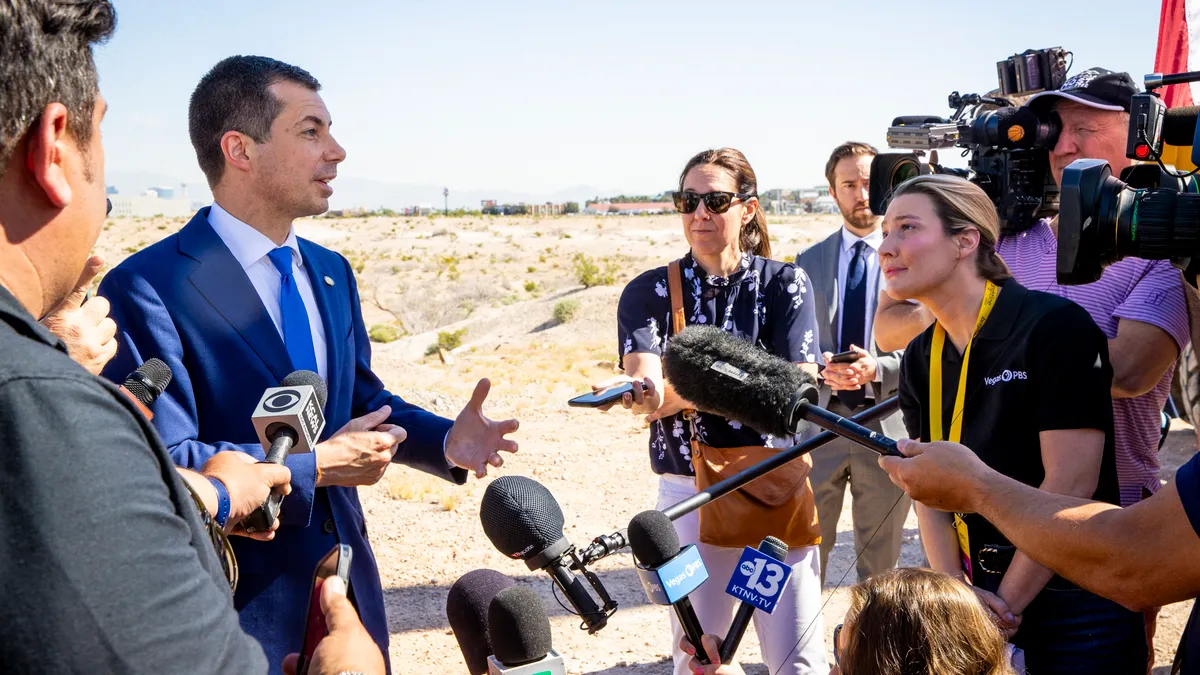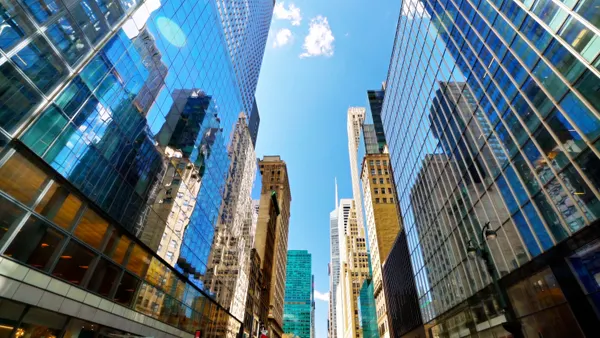Dive Brief:
- Construction began Monday on the $12 billion Brightline West high-speed passenger rail line between Las Vegas and the Los Angeles area, the company announced in a press release. Brightline CEO Mike Reininger said the goal is to open to passengers by 2028, when Los Angeles is set to host the Summer Olympics.
- Crowds of supporters and dozens of elected officials, including U.S. Transportation Secretary Pete Buttigieg, attended the groundbreaking in Las Vegas of the privately led effort, which is one of the largest infrastructure projects in the nation.
- With speeds of 200 miles per hour and no grade crossings, the 218-mile rail link between Rancho Cucamonga, California, and Sin City would cut travel times in half compared to driving, to about two hours, via fully electric trains. That speed will surpass Amtrak’s Acela in the northeastern U.S., currently the country’s fastest train, which can run up to 150 miles per hour.
Dive Insight:
Parent company Brightline Holdings’ model is to connect pairs of cities at a distance that is too short to fly and too far to drive. Brightline West marks the company’s second system.
“This is a historic project and a proud moment where we break ground on America’s first high-speed rail system and lay the foundation for a new industry,” said Brightline founder Wes Edens in the release. “Today is long overdue, but the blueprint we’ve created with Brightline will allow us to repeat this model in other city pairs around the country.”
Brightline already operates a line between Miami and Orlando in Florida, which travels at maximum speeds of 125 mph. It began initial service between its South Florida stations in 2018, and opened its $5 billion Orlando International Airport extension in September 2023. The company has plans to further expand its system to Tampa, Florida’s Space Coast in Cocoa and the Treasure Coast in Stuart.
Unlike California’s much-delayed high-speed rail project, Brightline mostly uses existing routes, which eliminates the need to acquire large swathes of land. The Brightline West route will largely run within the median of the often-congested I-15 and has full environmental clearance.
The line skirts the Mojave Desert and includes stops at Apple Valley, Hesperia and Rancho Cucamonga in California. It is expected to serve more than 11 million passengers annually, taking millions of cars off the road.
Building Brightline West
Brightline signed a memorandum of understanding in March 2023 with two union groups: State Building and Construction Trades Council of California and the Southern Nevada Building Trades Union. The Brightline West project will create 10,000 direct union construction roles, per the release. Members of the High-Speed Rail Labor Coalition will operate and maintain the line.
The company picked Austin, Texas-based Atlas Technical Consultants to manage geotechnical engineering and design. Brightline did not respond to Construction Dive’s request about other contractors involved with the project.
In December 2023 the project received a $3 billion grant from the Federal-State Partnership for Intercity Passenger Rail Grant Program, funded through the Infrastructure Investment and Jobs Act, and in January the DOT awarded it $2.5 billion in private activity bonds. The rest of Brightline West is privately funded.
Building Brightline West will entail more than 160 new structures — including viaducts, bridges and wildlife crossings — and use 700,000 concrete rail ties, 2.2 million tons of ballast and 63,000 tons of steel rail, per the release. It will also include 322 miles of overhead lines to power the trains and as well as 3.4 million square feet of retaining walls.












